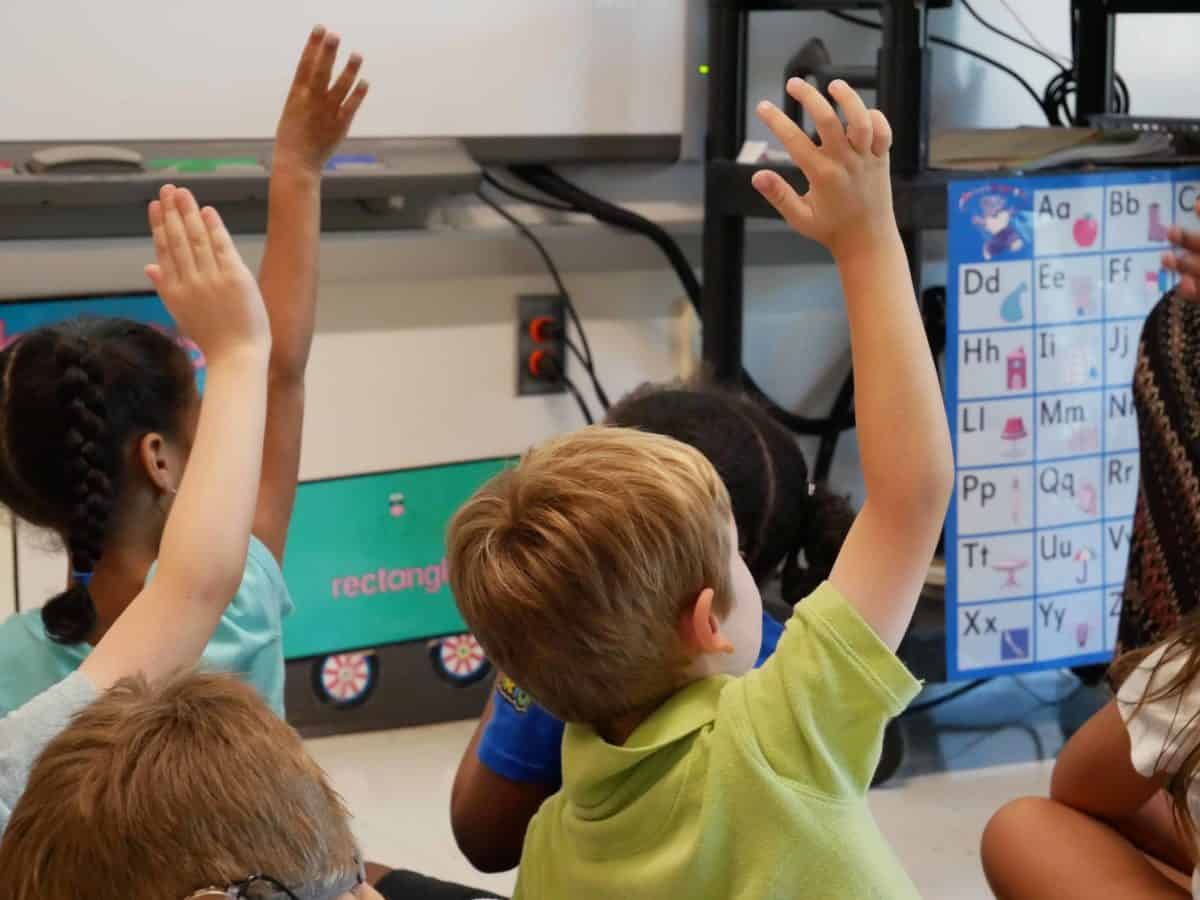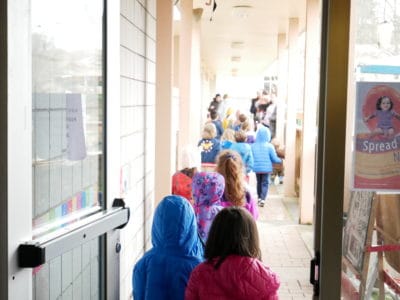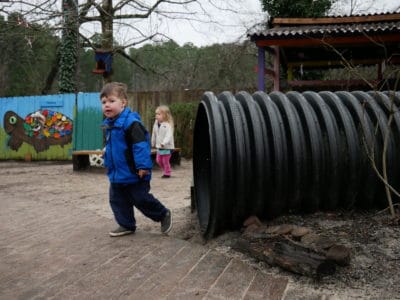
As the state responds to the COVID-19 pandemic and plans a gradual reopening, early childhood advocates are pointing to the necessity of child care moving forward.
“The bottom line is that if child care programs don’t receive the financial support they need to reopen, it will make it incredibly hard for North Carolina’s families to go back to work when this crisis is over,” writes Michele Rivest, policy director at the NC Early Education Coalition.
About 43% of the state’s child care centers and homes have closed, according to a brief released this month by the NC Justice Center’s Budget and Tax Center titled “NC without child care: Emergency support to state’s early education infrastructure needed now.” And about a third of North Carolina centers responding to a survey by the National Association for the Education of Young Children said they would not be able to reopen after a closure of more than two weeks without government investment.
Even before the pandemic, the state’s child care system did not meet all families’ needs. A Center for American Progress report in December 2018 found that 44% of people in North Carolina were living in a child care desert, defined as an area where there are more than three young children for every licensed child care slot.
The following map shows the percentage of children living in child care deserts, by county, pulling from the same 2018 data from the Center for American Progress, reported out by the NC Justice Center.
Next, take a look at how the percentage of child care centers/homes that have closed varies by county. The data are from the NC Partnership for Children as of April 14, 2020, reported out by the NC Justice Center.
Centers’ decisions of whether to close, Rivest said in an interview, have considered a variety of factors: the health of workers, children, and their families; the financial viability of operating without revenue from private-paying parents; and the demand of essential workers in their community.
Centers that remain open had to complete a state application to meet certain health and safety guidelines and commit to serving children of essential workers. The state also announced it would continue paying centers subsidy rates and NC Pre-K payments, whether they were open or closed.
“Those that stay open either had a demand or they decided there would be some money coming from the state some time and it was worth it to them financially to try to stay open and get whatever income they could without permanently closing their doors,” Rivest said.
Access and closures
Finally, look at the following map to consider both child care access and COVID-19 closures by county. Counties are color-coded based on access, then shaded based on the degree of closures. Darker shades imply more closures.
Counties with high access to child care (defined as less than 34% of children living in child care deserts) are green. Counties with medium access (34-66% of children living in child care deserts) are purple. Counties with low access (more than 66% of children living in child care deserts) are red.
Closure levels were broken down for the map similarly. High closures, represented by the darkest shades, are defined as more than 66% of centers/homes closed. Medium closures, represented by the medium shades, are defined as 33-66% of centers closed. Low closures, represented by the lightest shades, are defined as less than 33% of centers/homes closed.
A dark green county, for example, has a low percentage of children living in child care deserts but a high percentage of COVID-19 closures. If centers reopened there, the county’s system would be relatively accessible to children and families.
A light red county has a longer-term accessibility problem but has not seen as many closures.
A dark red county indicates a pre-existing problem of accessibility in the county, which has been deepened by COVID-19 closures.
Rivest said this final situation is where she predicts the most hardship in rebuilding the early education system. Counties with more deserts, Rivest said, often have smaller populations, fewer private-paying parents, and lower subsidy rates for centers. Add to that the uncertainty of how many parents will go back to work – and when – during an economic recession.
“That’s what I think is going to be our greatest challenge, is how do we bring child care back, re-open child care, in an equitable way?” she said. “And I think those higher-desert counties will have the greatest difficulty and need the most financial support.”
The COVID-19 crisis, Rivest said, has illuminated ways the previous system did not provide equal access across the state.
“When we reopen and rebuild, we need to do this in a much more equitable way than our previous system — or our current system — which is really very ad hoc,” she said. “It’s very market-driven, and it’s the North Carolina you look at right now. You have some counties and some people that have low access to resources, whether it’s health care or child care. And somehow we’ve got to level that field out a little bit.”




